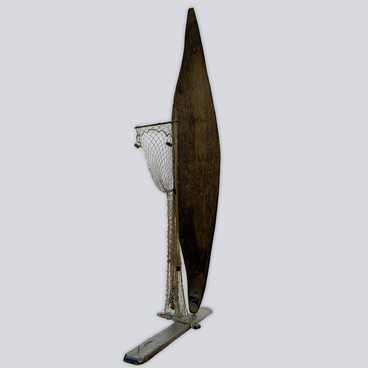In 1973 during the expedition of researchers from the Institute of Language, Literature and Art of the Kazan Affiliated Branch of USSR Academy of Sciences a clay figurine of a horse was found. The archeological digs headed by Kazan archeologist Petr Starostin were conducted in the village of Imenkovo, Laishevskiy Region of the Tatar Autonomous Republic (USSR).
Figure of a Horse
Время создания
4-7 century AD
Размер
3,7x65 cm
3,7x4,65x2,4 cm
3,7x4,65x2,4 cm
Техника
Hand molding, burning
Выставка
1
Открыть в приложении#1
Figure of a Horse
#6
#7
The Imenkovo tribes populated the Middle Volga territories in 4-7 centuries AD. Various work tools, weapons, jewelry pieces and dress ornamentals were found at the ancient settlement site. Ceramic artifacts, crockery fragments, anthropomorphic and zoomorphic figurines, spinning wheels – discus weights with holes in the middle – and other small handicrafts dominated amongst the finds.
#8
Upon studying the objects found at the site, experts came to the conclusion that the dwellers were mainly preoccupied with husbandry, iron extraction, melting of brass and bronze, jewelry making and pottery. Cook ware was made from the local greyish clay. As a rule, the cooking utensils were flat or in the form of pots.
#9
Clay animal figurines were found by archeologists at different Imenkovo ancient culture sites. Archeologist Galina Matveeva believes that the above figures represented religious beliefs of the Imenkovo tribes.
The figurine displayed at the exposition is a rough representation of a horse, with a short hefty body, its legs set wide apart, probably, for more equilibrium.
#10
According to archeologist Konstantin Rudenko, such artifacts were easy to make: a piece of clay was rolled into a small filament, the neck, tail and legs of an animal were consequently shaped. By squeezing the wet clay with fingers, a crest was made on the nape of the neck, the head and the muzzle were consequently shaped. There was another method of molding, where the legs, head and tail were molded separately and then stuck to the body and rubbed down to hold fast. After sculpting the figure, it was baked.
#5
The Imenkovo figurines were quite sturdy and difficult to break. So, Rudenko assumes that parts of the figurines were broken off on purpose, possibly, during ancient religious rituals as symbolic sacrificial offerings.
#11
National Museum of the Republic of Tatarstan
читать дальшескрыть
00:00
00:00
1x
Figure of a Horse
Время создания
4-7 century AD
Размер
3,7x65 cm
3,7x4,65x2,4 cm
3,7x4,65x2,4 cm
Техника
Hand molding, burning
Выставка
1
Открыть в приложении
Поделиться



